By Rick VanSickle
For 23 years, when the first Stratus Red was set free into the world, we have bought into the belief that a top-down approach to winemaking was the bomb.
Stratus Vineyards was the cool, new showpiece winery when it opened on Niagara Stone Road in 2005. The LEED-certified winery was the first of its kind in the world, and as a pioneer in environmental stewardship, Stratus continues to adopt new sustainable initiatives every year.

The concept from the very beginning was that the two flagship wines — the Stratus Red and Stratus White — were the jewels in a sparkly crown of estate wines. Just like the gravity-fed winery, all the wines were built on the principal that the top wines, after intense blending sessions, were created first and everything trickled down from there. The best grapes, the best barrels, the best blends were determined by founding winemaker J-L Groux (above) and his winemaking crew, and what remained was relegated into an array of estate red and white wines.
That is how it was in 2003 when the first assemblage, the Stratus Red 2001, and all subsequent Stratus Reds, were released, until … the 2020 vintage came along. And then everything changed. Big time.
As I write this, the Beatles’ White Album is blasting from my speakers …
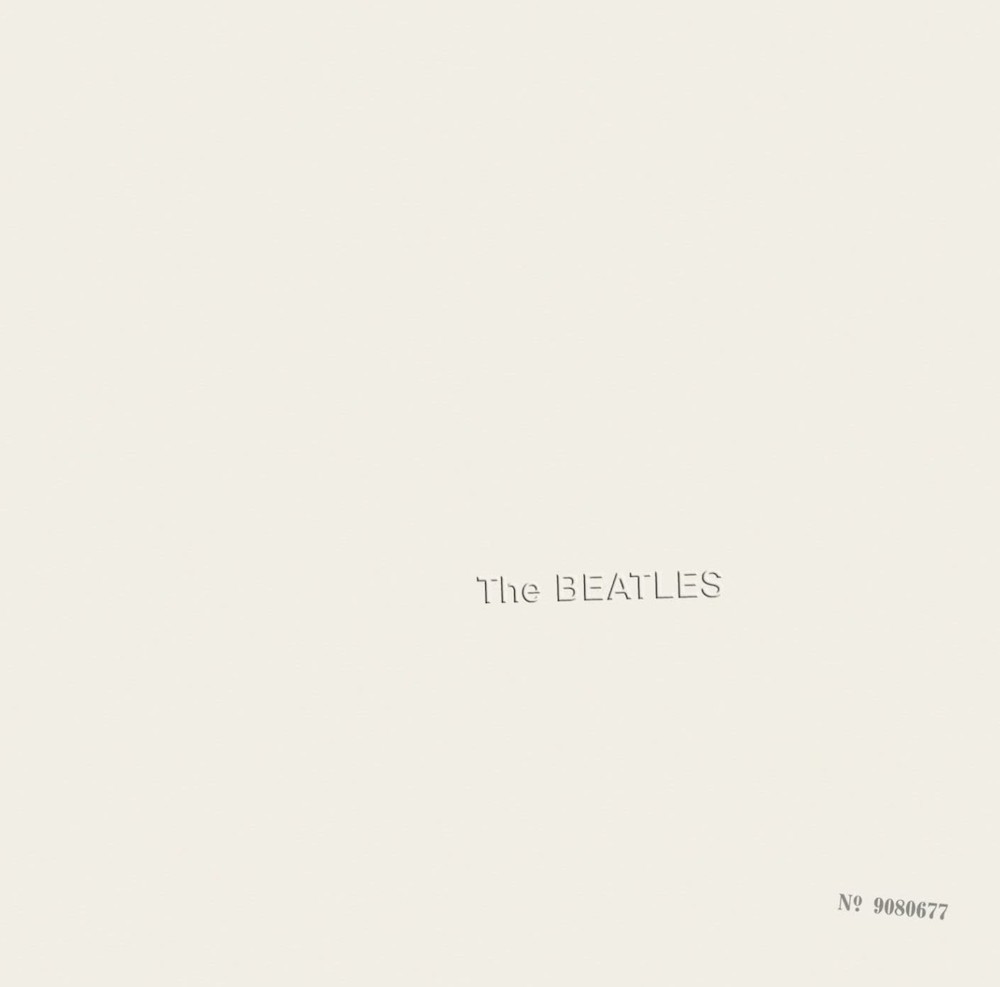
Blackbird singing in the dead of night
Take these broken wings and learn to fly
All your life
You were only waiting for this moment to arise
You were only waiting for this moment to arise
You were only waiting for this moment to arise
Hello White Album. Hello new White Label from Stratus. The serendipity doesn’t escape me.
The new “reserve” or “grand cru” tier (my words, not Stratus’s) under the minimalist, elegant, striking in its simplicity, White Label has been 20 years in the making and takes a much different path than the Black Label wines.
For two decades, the 55-acre estate vineyard, with its 16 different varieties under vine, has been meticulously surveyed and documented giving the winemakers, Groux and now Dean Stoyka (both seen in the very top photo by Stratus), intimate knowledge of each block, each dip, ridge, the mosaic of soils and every vine. “We’ve learned the microsites, and we understand each one’s synergy with the year’s climate,” said Groux. He along with Stoyka have unlocked the full potential of the estate’s grapes in any subsequent vintage.
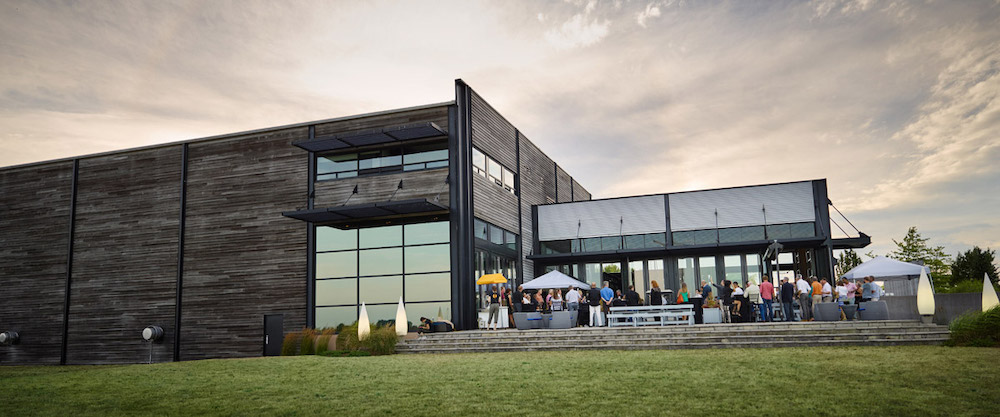
Stoyka was eager to show me two thick “soil information system” binders full of maps that pinpoint the sweet spots for top performing soils, rooting systems, and vines. The winemaking team, which already picks all the grapes at the estate by hand, isolates tiny blocks within blocks to craft the new White Label wines. It’s an invaluable tool and a departure from the Black Label top wines, which are made primarily in the cellar from extensive barrel samples and a top-down strategy — the best of the best goes into these wines. The White Label wines are “really a terroir driven thing,” said Groux, and are purposely picked from what the winemakers feel are the top blocks in any given vintage. “It’s understanding the vineyard through technique, innovation and winemaking.”
Stratus believes the White Label wines are characterized by “intensity, complexity and longevity” and reflect the winemakers’ combined 60 years of experience and their dedication to discovery. “Winemaking simply enhances what nature provides,” said Stoyka, “and by applying our observations and experience, we can optimize nature’s expressiveness by choosing the best parcel/vintage convergence.”
Groux, who was honoured with the Karl Kaiser Canadian Winemaker of the Year award in June, told Wines in Niagara during a tasting last week at the winery, that with a fully mapped out vineyard, “we now have a treasure. We are now picking for a purpose.”
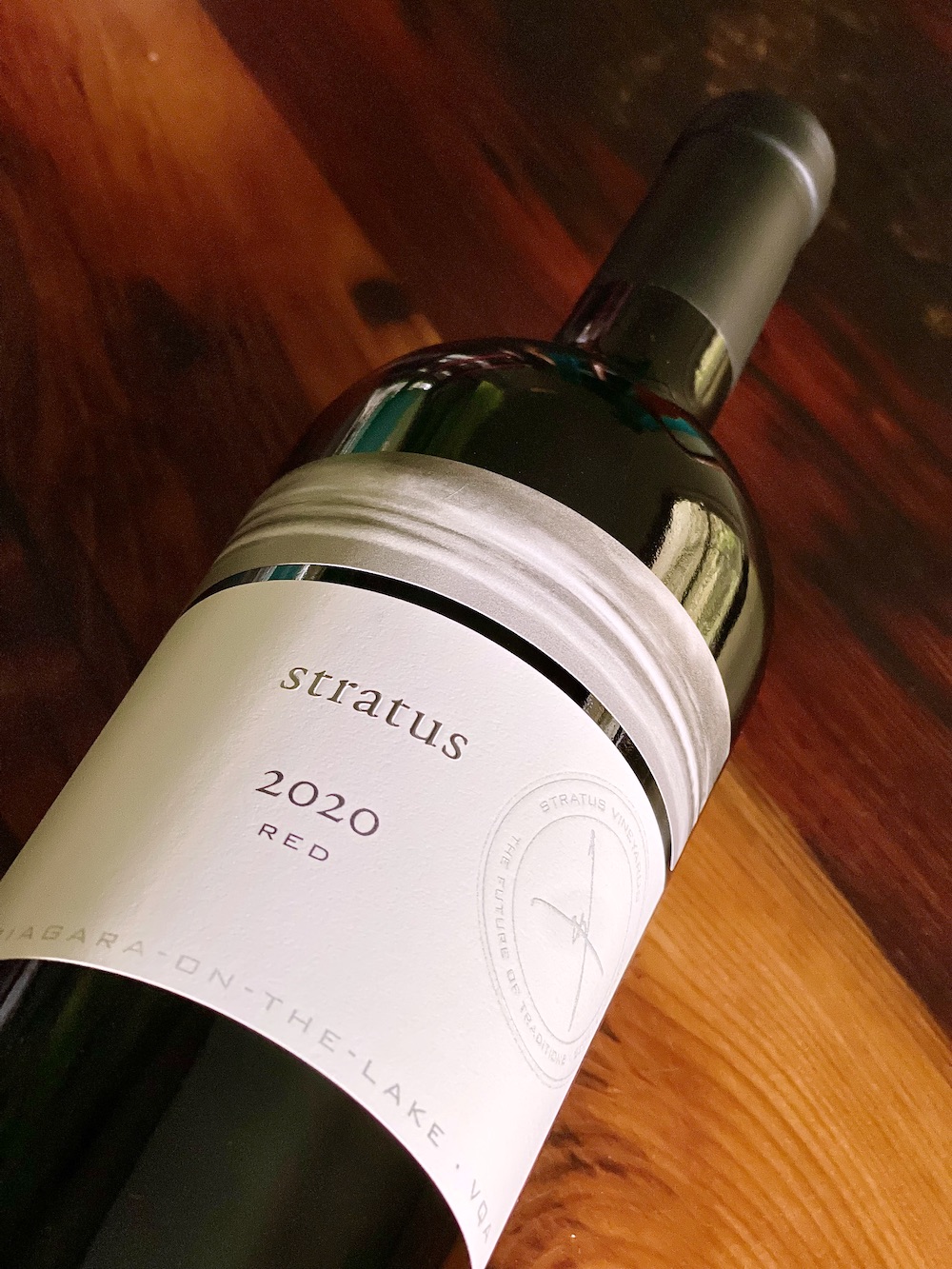
The first White Label wines include the top red blend, a Cabernet Sauvignon and a Merlot, all from the 2020 vintage and now released, with an amphora aged Chardonnay and Cabernet Franc being released next spring.
The emergence of the new White Label has meant other changes to the portfolio. But the classic Black Label wines will remain, with the Stratus Red being released at Vintages Dec. 2, but not at the winery until the summer.
Both the Tollgate and Wildass brands are being phased out, while a new “Alto” tier, appearing when the winemaking team has something new and interesting to bring to bottle, was introduced recently with a wine made with both red and white grapes. The more experimental, edgy tier called Trials is for new projects that can “grow up” and join the Black Label group.
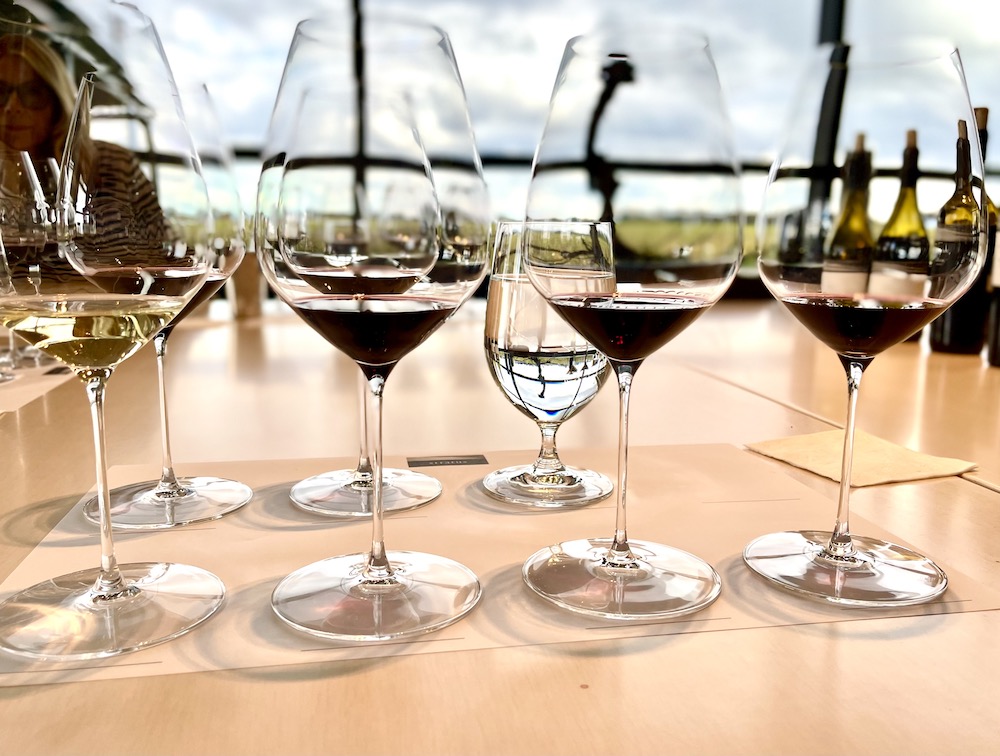
It should be noted that all the new-release wines, including the White Label wines, are being packaged in “featherweight” bottles. Stratus is a pioneer in environmental stewardship and has always believed in a “circular” economy. The LEED-certified winery was the first of its kind in the world when it opened in 2005 and to this day continues to adopt new sustainable initiatives every year. The new bottle weight is less than 370 grams, which is less than half the weight of its original 790-gram counterpoint. Weight reduction on bottles means less non-renewable raw materials, energy, and emissions. The Stratus White 2021 was the first wine to be bottled in the lighter glass and all bottles from 2021 going forward (plus the new White Label 2020 wines) are also be bottled in the featherweight bottles. That’s an average of 8,000 to 10,000 cases of wine at a savings of over 5 kg per case, amounting to an average of 35 metric tonnes of glass weight per vintage.
Here’s what I liked after a tasting with Groux and estate director Suzanne Janke of the three new White Label wines, plus the 2020 Stratus Red, coming to Vintages in December. Stoyka stayed briefly at the tasting but had to bolt to Toronto for a WSET Level 4 exam.
The classic Stratus Red
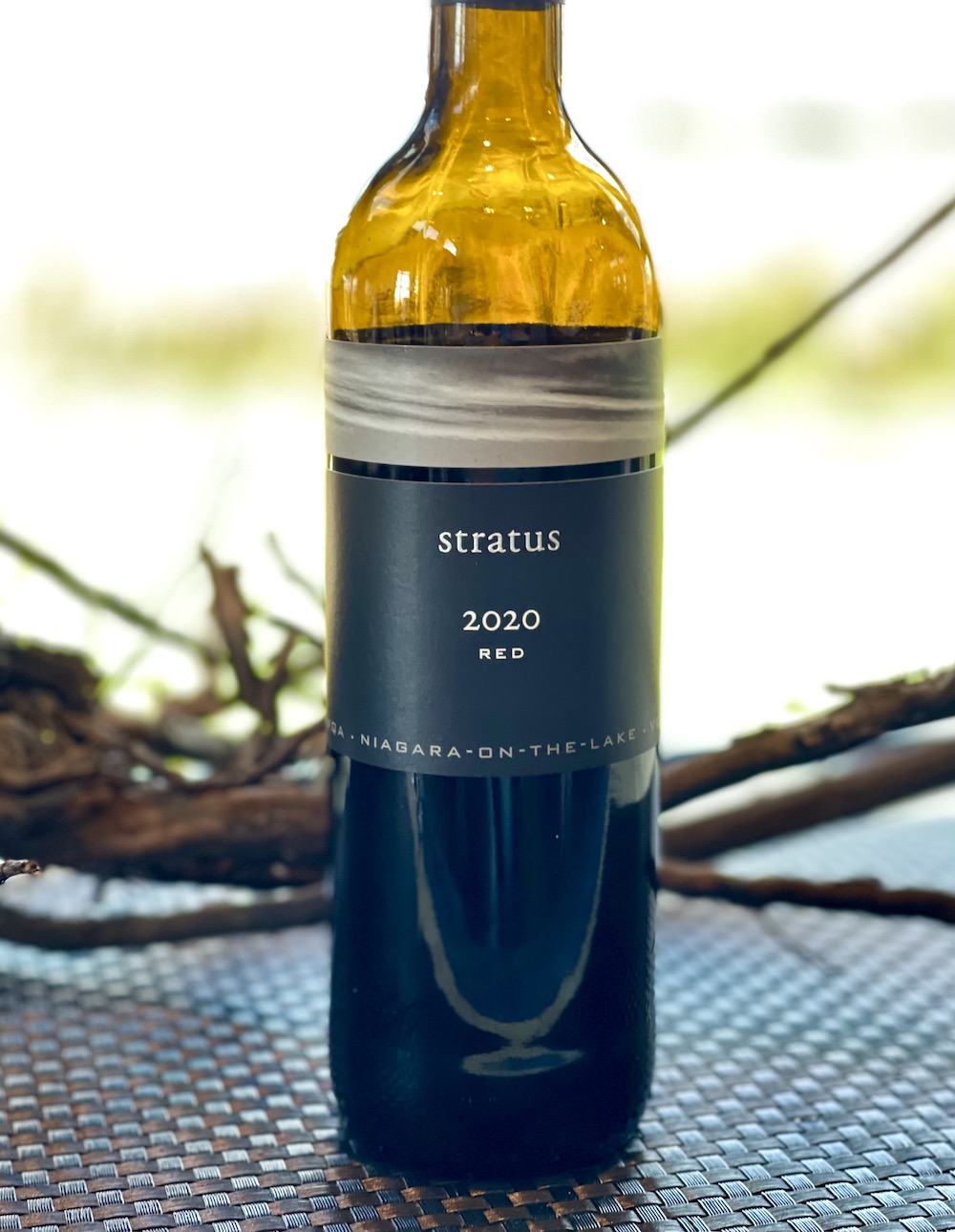
Stratus Red 2020 ($55, released Dec. 2 at Vintages stores and at the winery next summer, 94 points) — If someone had of told me a year ago that the Stratus Red, an iconic Niagara blend, was going to get competition from a new wine in the portfolio, I would say that’s just crazy talk. But here we are. The Stratus Red has been made in nearly every vintage since Stratus began, with the first vintage released in 2001 (2000 was declassified). The Stratus Red 2007 topped the very first Wines in Niagara’s most exciting wines of the year list in a post from December 2010 and has rarely strayed far from the Top 10 list since then. It has always been a radical departure from other red blends in Niagara, in that all red grapes grown at the farm can be considered for the assemblage, not just the Bordeaux varieties. It requires rigorous, time-consuming blending sessions to arrive at the final cuveé, with the top barrel samples going into this wine and what’s left trickling down to determine the rest of the red portfolio. The blend for this beautiful wine is 53% Cabernet Franc, 24% Merlot, 17% Petit Verdot, 3% Cabernet Sauvignon and 3% Malbec that spends 21 months in French oak (20% new). It’s gorgeously perfumed on the nose with a dense array of black cherries, wild raspberries, cassis/black currants, forest floor, savoury notes, and rich, elegant, and toasted spice notes. It caresses the palate with ripe, velvety tannins and reveals concentrated, ripe red berries, black currants, anise, subtle earthy/savoury notes, dried herbs, and rich spice notes that all echo on a long, vibrant finish. As it good as this is, it will get even better for the next 10 years. It you are not ready to go up to the next level with the White Label Red at $145 a bottle, this will serve you well. The Stratus Red has not lost a step with the emergence of the new kid on the block.
The new White Label wines
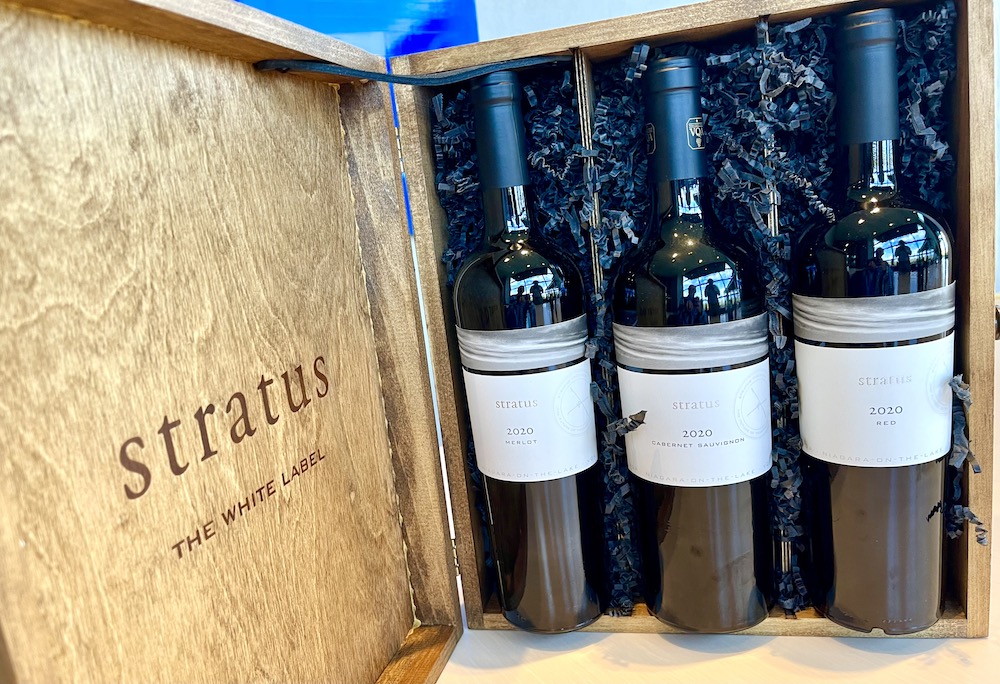
Note, all three of these wines are now available at the winery or online, plus the trio is available in a limited edition, three-bottle set presented in a wooden box. No more than 200 cases of each are made in any vintage.
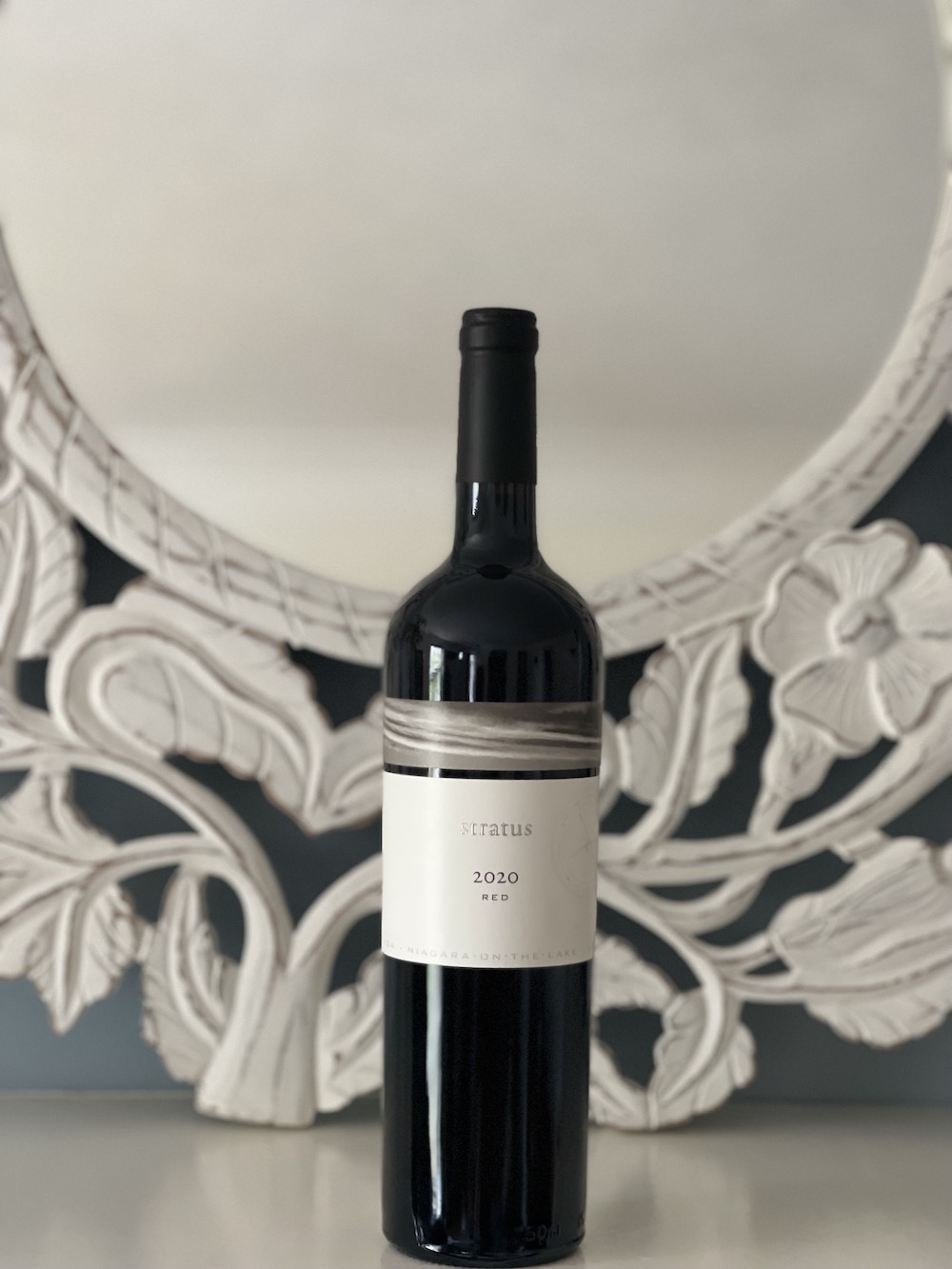
Stratus White Label Red 2020 ($145, available now at the winery or online, 97 points) — Sourced from specific blocks within blocks in the 55-acre Stratus Vineyard comes this ethereal new top of the table red blend that has been 20 years in the making from a vintage that has no equal in Niagara. “It’s beautiful to have a vineyard like this to make wines like these,” said J-L Groux at the tasting, referring to the new White Label wines. The blend is 40% Cabernet Sauvignon, 27% Cabernet Franc, 13% Merlot, 13% Malbec, and 7% Petit Verdot that spends 676 days in French oak (26% new). Not wanting to bury the lede here, I will just say this off the top, this is the finest red wine I have ever tasted from Niagara and hence the highest scoring wine I have awarded. It’s a Left Bank looking blend, but really sits somewhere between the Medoc and Napa Valley, combining the power of Napa and the grace of Bordeaux, and capitalizing on Niagara’s most inspiring red vintage since the modern-day wine industry began in the region. Comparisons to other regions seem lame, but this is a wine priced to draw those comparisons, and consumers will. In reality, it’s a 100% Niagara tour de force that has been decades in the making.
From the first impression of dreamy, perfumed notes, you are drawn into this wine on the nose and beyond. It’s profoundly fruited with black currants, dark cherries, blackberries, and plums followed by foraged truffles, forest floor, savoury dried herbs, earthy notes, leather, graphite, and enticing spices notes that are elegant and persistent. It opens on the palate to firm, chewy tannins in support of a rich, luxuriously textured array of dense dark berries, damson plums, cherry/kirsch, dried tobacco, herbs, underlying earthy/savoury notes and gorgeous toasty, vanilla-tinged, elegant spices all leading to an echoing, velvety smooth and finessed finish that seems to last for minutes. This blockbuster, highly structured red is the epitome of grace and power and has what Groux calls a drinking window that can improve for three decades. He could be right, but I would safely suggest 15+ years, based on some of the greatest older Niagara reds I have tasted in the past.
It comes at a hefty price, but not the highest in Niagara, think Stone Eagle from Two Sisters and the Legacy Cabernet Franc from Vineland Estates among others, but it is pushing the boundaries considerably north of what consumers are used to, but has become commonplace in the Okanagan Valley. As always with price, it is what consumers are willing to pay that drives it up or down, but I see nothing but good things coming from premiumization.
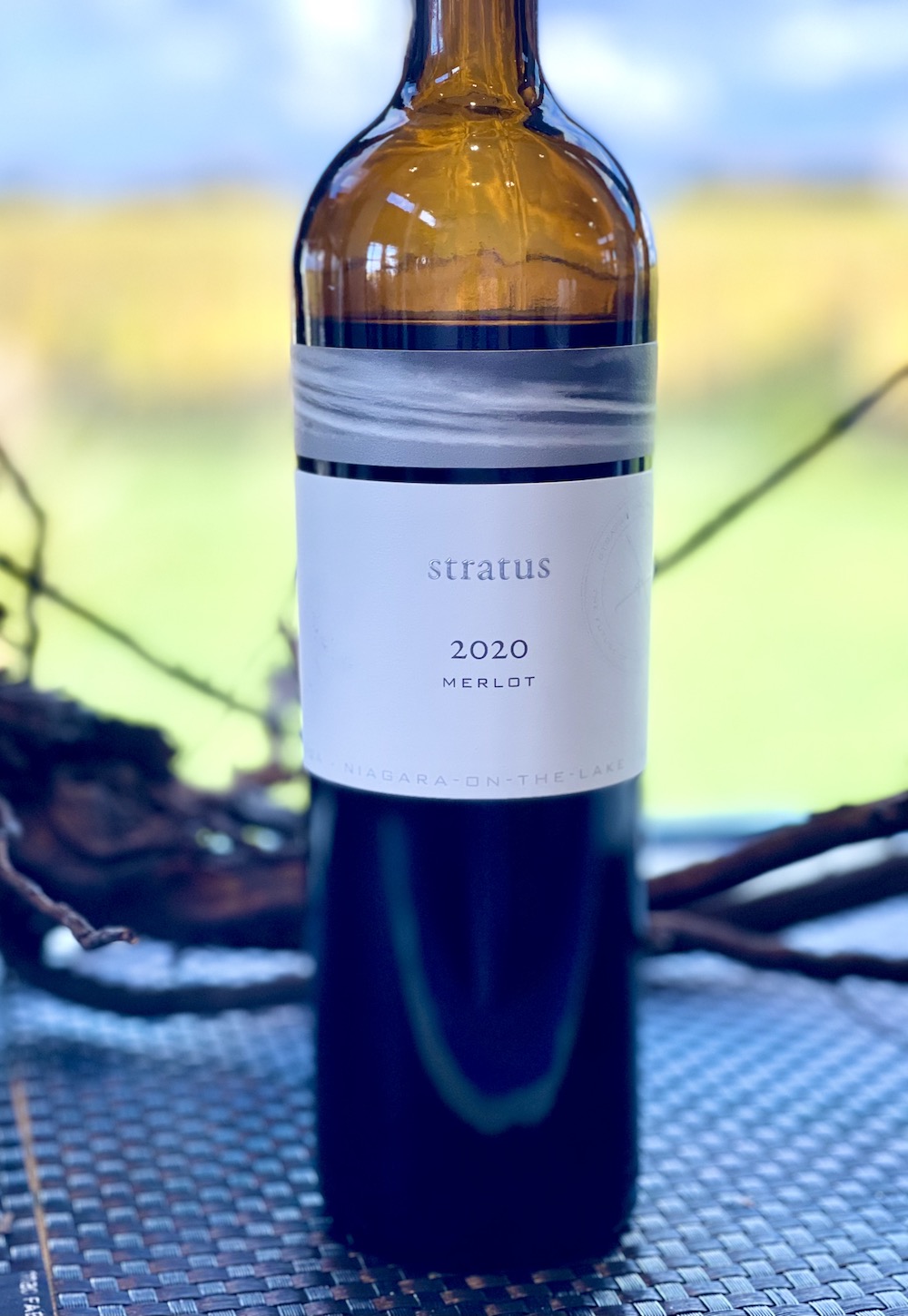
Stratus White Label Merlot 2020 ($95, 95 points) — The fruit for the first White Label Merlot is from the clay dominant “ME3” Merlot block planted in 1985. It spent two years in French oak barrels, 12% new oak. It has a lovely, perfumed nose with floral notes, a full range of ripe red berries, plums, black currants, and aniseed with elegant oak spice notes. The tannins are ripe and polished on the palate with dense black raspberries, dark cherries, currants, anise, toasty spice notes and another long, echoing, and lifted finish. Can age 12+ years, maybe more.

Stratus White Label Cabernet Sauvignon 2020 ($125, 94 points) — Varietal Cabernet Sauvignon is the wine everyone wants to make but is likely the hardest to get right in Niagara. Climate is partially to blame; it’s just hard to get it fully ripe before the cold rushes in. Unwillingness to make changes in the vineyard, high yields and finding the correct location to source and grow this well-loved grape are other factors. Groux and Stoyka, through meticulous mapping over 20 years, have isolated the CS4 block (Cabernet Sauvignon block) as an ideal location for this needy grape and the result is this stunning Cab Sauv. “In my opinion,” said Groux, “this is the best Cabernet Sauvignon I’ve made in Niagara.” And that’s saying something; he’s made wine from Cab Sauv for 33 years locally. Another beguiling nose here with ripe blackberries, cassis, anise, black currants, a touch of ripe, black cherry/kirsch, earthy/savoury notes, and elegantly appointed oak spices. It’s deep, complex, and ripe on the palate with dense blackberries leading the charge and flecks of anise/licorice, kirsch, and black currants chiming in. The fine oak spice notes follow. The ripe, firm tannins are more complementary than obtrusive, and the bright, energetic acidity helps this shining through the bright, lifted, and long finish. Can cellar 15+ years.
A glimpse into future White Label wines
The White Label is still in its infancy and will always be determined by the vintage. There is no White Label white blend yet, but two other wines are being released this spring, including an amphora raised Chardonnay and Cabernet Franc. I previewed both wines with Groux and Janke and offer these preliminary notes.
Stratus White Label Chardonnay 2022 — This was sourced from the 4.2-acre Chardonnay parcel in the estate vineyard, planted to Clone 76 and aged on its lees in amphora for nine months. It comes across as quite Burgundian, Chablis-like, in its presentation with orchard fruits, creamy notes, lemon tart, nectarine and beeswax with a saline, crisp finish.
Stratus White Label Cabernet Franc 2020 — Sourced from a 1999 planting of CF from seven rows of a block chosen from the extensive vineyard mapping began 20 years ago, it’s quite elegant and lush with red berries, beautiful herbaceous notes, firm tannins and a peppery, lifted finish.






Hi Rick, I always enjoy reading your notes and truly appreciate your independent commentary. But your comment “I see nothing but good things coming from premiumization” was interesting and somewhat puzzling to me. As a consumer, I see all kinds of issues! I am personally very sad that I can no longer afford to buy the world’s greatest wines. When I started buying wine 25 years ago, the best wines were certainly more expensive, but they were available (not only sold to a ‘certain clientele’) and manageable in price. I have had the opportunity to share wines with generous wine lovers who brought incredible wines over the years; but even very generous people now find it much harder to open bottles that can now be worth thousands of dollars. The very rich often buy these wines (or wineries!) as Veblen goods; wine increasingly becomes a status symbol. The increasing global inequalities are reflected in the contemporary wine trade. Only the 1% can access and purchase an increasing number of the world’s greatest wines. Napa is perhaps the greatest example of what can happen to a region when ‘premiumization’ occurs; Burgundy is another region which has changed significantly over the last 20 years.
Also, as a BC resident, I’m not sure I would agree that $145/bottle is “commonplace in the Okanagan Valley”. It certainly happens, but only among 1% of the wineries in the Okanagan (similar to Niagara). Checkmate and Martin’s Lane are certainly in that sphere, Mission Hill for some of their top wines, but few others. But I don’t doubt it will be more common in the near future in both regions.
JD, Thanks for your comment, interesting counterpoint and a good one. I guess I should have said “premiumization” to a point … but not to the point of ridiculous, unattainable prices like we see with those in Napa, Burgundy and Bordeaux. I guess my not-too-articulate point was that Niagara was lagging behind on pricing compared to B.C. The Stratus Red, a benchmark red in Niagara, was priced at $44 for years and years before climbing to $55 for the current vintage. $145 for the White Label is certainly up there, but I don’t think it’s unattainable for a special wine like this, but I do know that depends on the perspective of each individual. I guess time will tell if there are buyers out there willing to shell out $145 for a Niagara red wine, or we will see the price come down or sit on the shelf unsold. I do like that Stratus created a new tier and left the classic tier at the more affordable prices. Is the White Label worth near $100 a bottle. That’s an even bigger question. Again, thanks, pricing is always a great debate to have. Rick